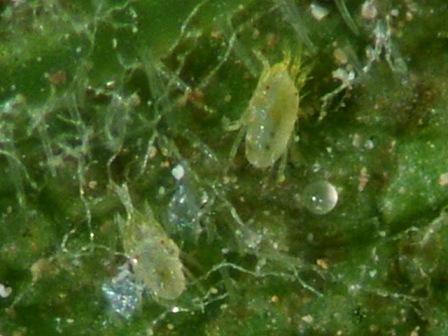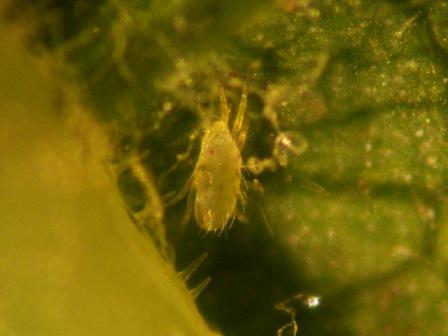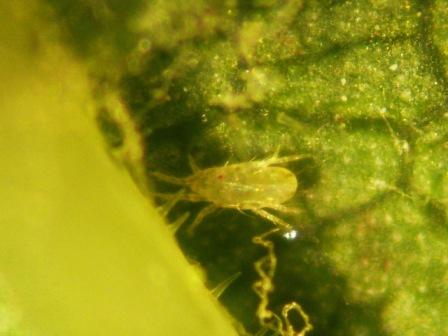13 May Watch out! The “yellow mite” is in Montalcino
In 2010, the second international meeting “International Organization for Biological and Integrated Control was held in Florence at the CRA-ABP, Agricultural Research Council, Research Centre for Agrobiology and Pedology. Professor Simoni illustrated also the studies at Case Basse.
“Il Chianti e le Terre del Vino” luglio / agosto 2010 – Italia”
S. Simoni, D. Goggioli, S. Guidi, F. Tarchi
Ben io qui canterei, qual sia de gli orti
La cultura miglior, come di Pesto
Due volte rifioriscano i rosai.
Pingues hortos quae cura colendi
ornaret, canerem, biferique rosaria Paesti
(IV, 118)
In 2010, the second international meeting “International Organization for Biological and Integrated Control – Working Group Integrated Control of Plant-feeding Mites (IOBC/WPRS) – was held in Florence at the CRA-ABP, Agricultural Research Council, Research Centre for Agrobiology and Pedology.
Major IOBC activities include development and standardization of testing methods to evaluate the effects of pesticides on beneficial species, and the practical implementation of biological and integrated controls for pests and diseases on different crops. There are also 12 Working Groups (WG) within Global IOBC: their activities include the organization of meetings and forums for special interest groups, developed under IOBC umbrella, and they serve to promote communication between biological-control workers interested in particular topics. For instance, it can be cited the WG ‘Integrated protection in viticulture’ that promotes and coordinates research on integrated control strategies in viticulture by reducing inputs of pesticides and by maximizing the effects of natural enemies; the WG ‘Induced resistance in plants against insects and diseases’ that wishes supports exchange and discussion on results from applied and fundamental research of induced resistance (IR) and induced tolerance (IT), against diseases and insects; the WG ‘Pesticides and beneficial organisms’ which identifies selective pesticides for beneficial arthropods and promotes their use in order to enhance biological control in plant protection and to reduce impact of pesticides on non-target organisms.
The working group involved in the Florentine meeting includes acarologists and other scientists coming from all over the world which deal with all the problems caused by plant feeding mites in different crop systems. The emphasis within the group is to develop methods aimed to reduce the amounts of pesticides, as well as other chemicals that may harm beneficial organisms, normally used for mite control in protected crops. The pool of strategies will include how to manipulate crop systems, to adopt physical barriers and microbial control, to increase predators and resistant crop varieties, all of which should be integrated into future systems of pest control.
The general goal of the meeting was to promote contact and cooperation between researchers, scientists, industries and biofactories on integrated and biological control of plant feeding mites in order to support the implementation of these strategies in agriculture.
Tra i lavori presentati al convegno, uno in particolare ha riguardato il problema del ragnetto giallo: “Eotetranychus carpini: esperienze di controllo biologico in vigneti toscani ”, in cui sono stati riportati parte dei risultati dell’attività svolta negli ultimi anni in alcune aziende della Val d’Orcia, produttrici di Brunello e di altri vini di pregio.
Here, it was presented the work “Eotetranychus carpini: biological control experiments in Tuscan vineyards (Italy)” (authors: Castagnoli, Liguori, Simoni, Sabbatini Peverieri, Goggioli, Guidi, Tarchi), focused on the plant feeding “yellow mite” and reporting results of a triennial experience acquired in high quality wine producing areas of Montalcino and Val d’Orcia (central Tuscany).
In recent years, infestations of yellow mite have increased in organic as well as IPM vineyards; these caused an economically important damage to grape and wine production; it is an urgent goal to promote integrated control strategies in viticulture by reducing inputs of pesticides, by maximizing the effects of natural enemies, thereby for a more sustainable impact on the environment.
Early yellow mite infestation induces interruption of shoots development, small necrosis and leaves deformation, shortening of internodes, small clorotic areas where the mite feeding stings are done. Late yellow mite infestations induce premature drop of leaves, with a resultant decrease in the sugar content of grapes and in lignifications of branches the following year.
The phytophagous mite, E. carpini, during the period of activity, is light yellow colored with two small red ‘eyes’. The winter female is uniformly lemon-yellow. The female has an oblong body 0.35 mm long; the male is smaller, fusiform and very mobile. The eggs are spherical, smooth, translucent, about 0.1 mm, and they can be mistaken with the small droplets of sugar contents issued by vine leaves.
Fertilized females overwinter in colonies under the bark of the vinestock. Late Winter or Spring, by depending on temperature and climatic conditions, the females move to opening buds, start to feed and lay eggs, mainly on the lower surface of the leaf.
When temperature is over 20°C, the egg-to-egg development lasts in about 10 days, a female can lay 2-3 eggs/day and oviposition period can last for about 20 days. In the most favourable conditions, the population of E. carpini can double in 4-5 days.
The number of generations/year can vary year by year; generally in the Northern/Central Italy 7-9 generations can be registered. The Spring and Winter generations last within a month, the Summer ones in 10-15 days.
Predator mites play a fundamental role in the control of the phytophagous mites on vineyard. Mainly, phytoseiids are the most important and efficient mites to control and lower the populations of phytophagous mites, tetranychids in primis. The presence and increase in density of phytoseiids on crops, particularly in vineyard, are affected by different factors: control strategies of pests control (chemical, integrated or biological); climatic and agronomic traits (microclimate, presence and density of hedgerow); morphology (i.e. pubescence in the lower leaf surface); physiology (hydric stress of plants).
The phytoseiids inhabiting woody plants, spend winter, generally as females fertilized, in sheltered areas of the plants and they are active for the whole vegetative period of vine and of the other plants. Generally the phytoseiids tend to remain on plants and maintain high populations, When the preferred prey is absent or rare, the phytoseiids can feed on alternative food, i.e. pollen, fungal hyphae and sporae, vegetal exudates , other small arthropods.
These are the reasons by which the searching and detection of prey are efficient also in low prey density conditions.
By considering all these aspects, in the vineyards of different vine farms located in Val d’Orcia, three different species of phytoseiids, predators of yellow spider mite, were released: in the ‘Forte’ farm (Castiglion d’Orcia), Typhlodromus exhilaratus, reared in the facilities of the Centro di Ricerca per l’Agrobiologia e la Pedologia di Firenze (CRA-ABP)was introduced. In the ‘Sante Marie’ (Montalcino) a commercial strain of Neoseiulus californicus was released. In ‘Case Basse’ Soldera (Montalcino) farm, Kampimodromus aberrans was released: these phytoseiids were coming from biological and biodynamic vineyards of the Veneto region (north-eastern Italy). The control of yellow spider mite was more expensive and difficult in the vineyards where T. exhilaratus and N. californicus were released; on the contrary, K. aberrans colonized uniformly the vineyard and efficiently lowered the infestation of yellow spider mite, also in the years following the first release.
Kampimodromus aberrans seems to settle down permanently in host vineyards; after the first release, farmers can transfer pruned branches and leaves from vineyards with high phytoseiid density to those without.
Furthermore, K. aberrans doesn’t seem to limit the presence of other wild predators in vineyard, so no detrimental effect is in biodiversity.
Unlike acaricide treatments, results of transfer and release of K. aberrans in vineyards infested by the yellow mite are verified in a mid- or long-term. By a longer perspective, this approach has to be considered as investment in the future maintenance of the equilibrium of peculiar vineyard mite fauna.
Further experimental studies are being carried out to optimize release techniques and interpretation of dynamic of predator population, with a special regard to Case Basse farm where owners’ helpfulness contributes to successful researches.





